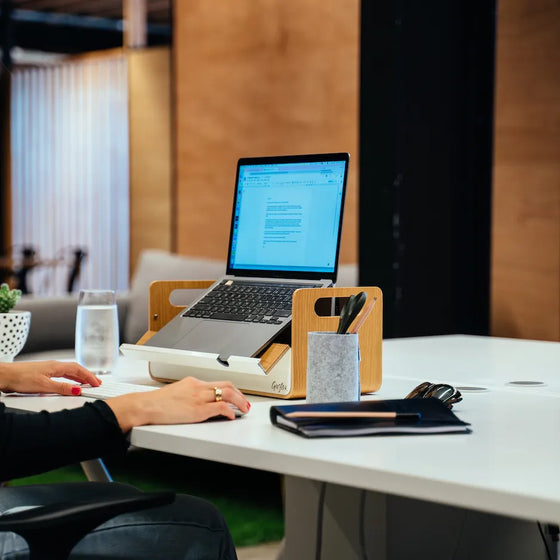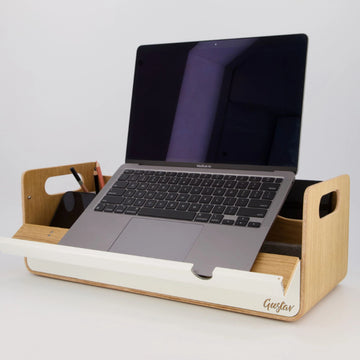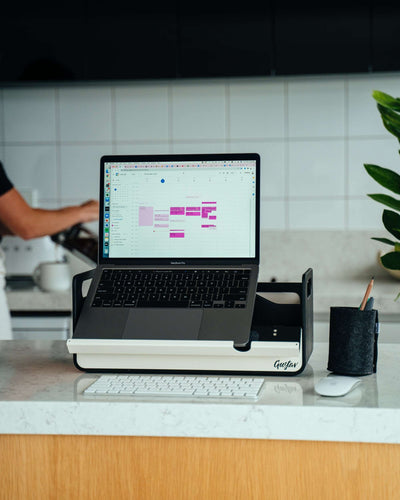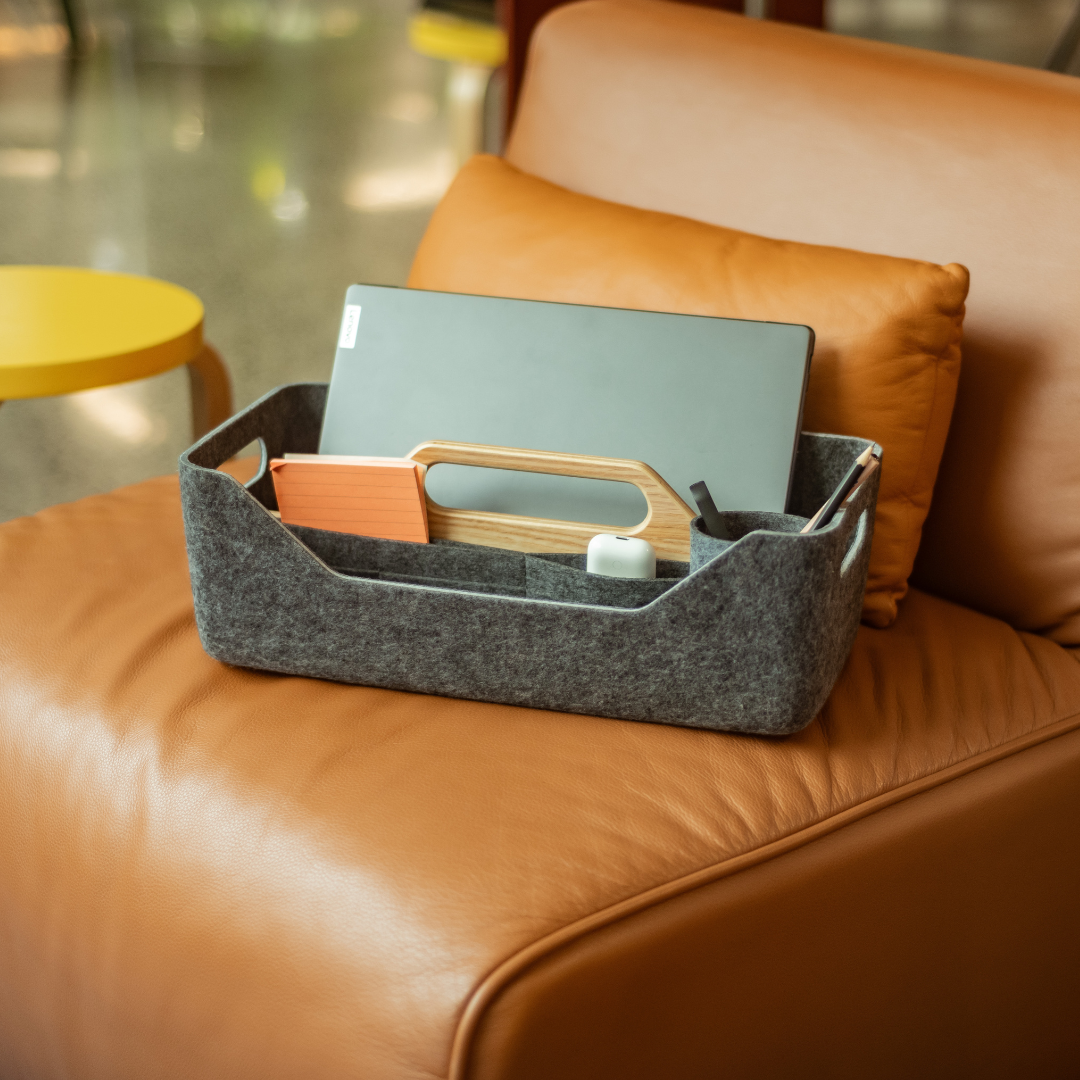How to Sit Ergonomically at Work
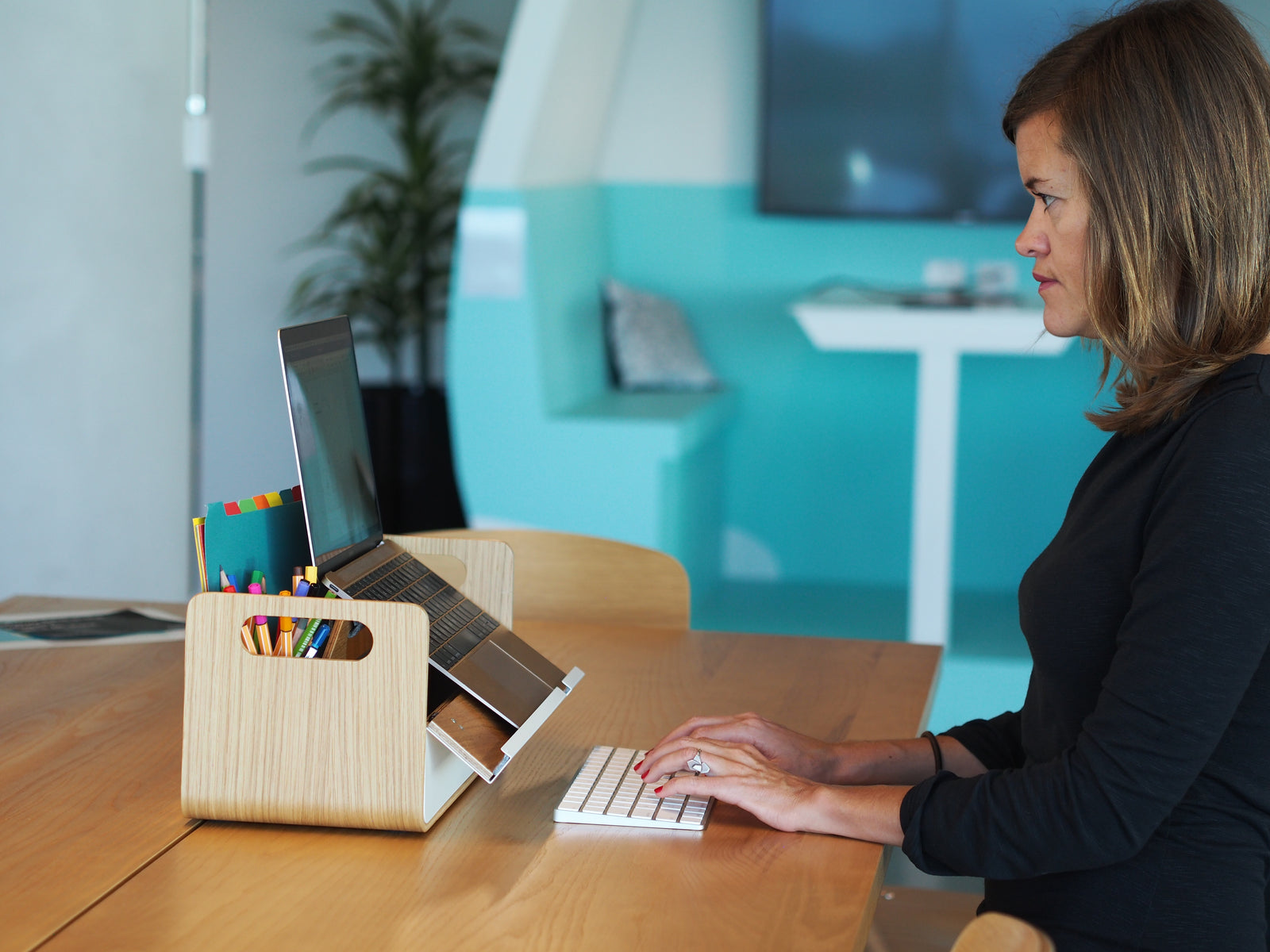
The word ‘ergonomic’ stems from the Latin ergon, meaning ‘to work’, though these days it is more commonly understood to relate to the design of the tools we use for work and how well (or not) they treat the body.
Of course, it’s not just the meaning of the word that’s changed over the centuries – the nature of work has too; most of us do less running, hunting or lifting as part of our daily grind, and much, much more sitting. This is far from ideal for the body, which is why ergonomic design is such an important factor in workplace strategy. Designers spend years on R&D to create the most ergonomically friendly furniture; companies spend thousands on workplaces that help their people work – and feel – better.
It was a major consideration for us when we created Gustav too. With remote and flexible working now more commonplace than ever, we wanted to provide workers everywhere with a tool that was as kind to the body as it was practical for mobile working. All our research left us with a fair bit of knowledge around the right way to sit, so we thought we’d share the most important points here.
Sitting Correctly in your Chair
The first thing to pay attention to is your position in your chair. After all, chances are you’re going to be here for several hours! Many people assume that correct seating posture is a totally straight back, but in fact this isn’t necessary. Your lower back has a natural curve, so it is alright for this to be supported by the chair. You can use cushions or tilt the back of the chair so that your lumbar region rests against them. This will allow your upper spine to remain straight, which will help avoid discomfort in the neck and shoulders. Hips should be as far back in the chair as you can (no slouching!) and you should position the height of the chair so that your feet are flat on the floor and your knees are just slightly lower than your hips. Finally, if your chair comes with armrests, use them! Try to position these at a height that allows your arms to form a 90 degree angle by your side, and lets your shoulders be relaxed and not hunched.
Positioning your Keyboard
While bad backs are the complaint most commonly associated with poor ergonomic design, pain in the arms and wrists, often in the form of repetitive strain injuries (RSIs) are nearly as common. These often result from poor positioning of the keyboard – something that’s very easy to fix. Aim to position the keyboard directly in front of your body, with perhaps a 10 – 15cm space on the desk to rest your wrists while you pause from typing. It should also be directly in the centre of the screen. As you type, your wrists should be straight – you may want to use a wrist rest to facilitate this, or you could tilt your keyboard slightly.
Positioning your Screen
Two main considerations for your screen position are to help protect your posture and your eyes. To position your screen for optimum posture, adjust it so the top of the screen sits as close as possibly to your eye level, so as to avoid unnecessary straining. It should also be centred above your keyboard. To help avoid eye fatigue, make sure the screen is just over an arm’s length away from your face. You should also put the screen in a place where glare from sunlight or overhead lights is at a minimum. For those spending very long hours staring at the screen, it may be worth investing in a screen protector, or even a curved monitor that can make things a little easier on the eyes. For the remote workers out there, you’ll be pleased to know that Gustav has been designed to function as a versatile laptop stand, giving you the perfect angle to work ergonomically whether you’re at the kitchen table, the home office, or even somewhere more exotic.
Move!
Even with the most ergonomically friendly office in the world, sitting for long periods of time will take its toll on your body. The answer to this is to regularly get up from your desk and move. We might not need to run around and hunt to survive these days, but our bodies are still designed for movement. Aim for a quick break of one to two minutes every twenty minutes to stretch and give your eyes a rest. Every hour, try to take longer breaks and walk around, or even run through a short workout. You’ll come back to your desk feeling refreshed, both mentally and physically.
We hope the above post has been a useful reminder of some of the most important ways you can look after your body while spending those long days at the computer. For the mobile workers among you, check out the Gustav range to see how you can make any space your space – ergonomically!


